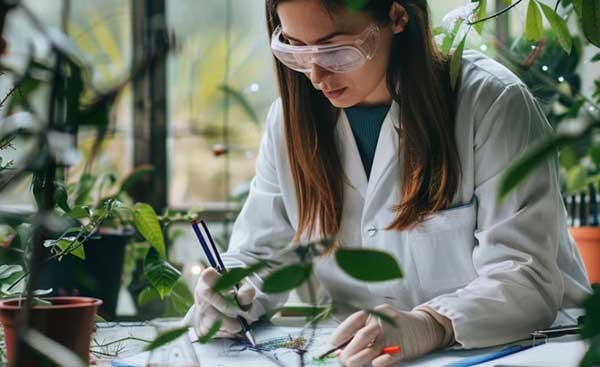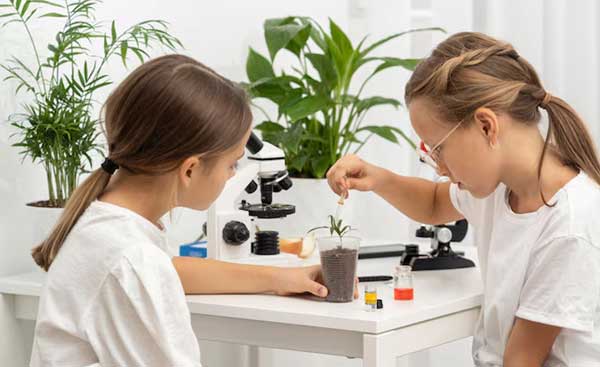Botany becomes more important than ever before when discussing climate change, loss of biodiversity, and food insecurity. Since botany is a body of scientific knowledge about plants and their many different forms, this field gives much more than just passages in the books: it is an opportunity towards a more conscious attitude towards nature, sustainable thinking, and scientific innovation. Adding botany to classrooms helps raise thinkers who can protect the planet and shape a better future.

Why Botany Belongs in the Classroom
A solid botany education program teaches more than plant facts. It helps students see how life works. They learn how leaves turn sunlight into energy, how roots pull water from soil, how plants reproduce. These lessons form the base for understanding biology. But botany reaches further. It links with math through measurements, with geography through climate zones, and with chemistry through soil tests.
Students in a botany education course don’t just sit in class. They step outside. They collect samples, run experiments, and notice how ecosystems change. In labs, they mix solutions, test acidity, and track plant growth. In greenhouses, they plant seeds and wait. They measure, record, and question. This hands-on approach does something powerful—it builds sharp thinkers. It turns passive learners into active minds that use data, ask better questions, and understand the world in motion.
The Challenges of Becoming a Botanist
Learning about plants can spark real curiosity. Watching a seed sprout, tracing how roots absorb water—it’s exciting. But botany demands serious work. It blends biology, chemistry, and ecology. Students read dense texts, run lab tests, and hike out for field observations. The workload stacks up fast. Writing research papers adds more pressure. Some students fall behind. Others feel overwhelmed by formatting rules or strict deadlines. In this case, seeking guidance from essay service Edubirdie can be a great option. With reliable online help, learners get support from academic writers and professionals. These experts help polish reports, clarify concepts, and ease the stress. Using Edubirdie allows students to focus on real learning—not just chasing word counts. It’s not about shortcuts, but smart choices. Support like this helps them meet academic goals without burning out or giving up on science.

How Botany Enhances Scientific Understanding
Botany trains the mind in observation and experimentation. Students learn to:
- Formulate hypotheses based on plant behavior
- Collect and interpret data from natural environments
- Identify patterns in plant growth and seasonal changes
- Use lab equipment for testing plant structures and compounds
These tasks promote a scientific mindset and prepare learners for careers in biology, ecology, and environmental science. With plants forming the base of most ecosystems, understanding their role is essential to understanding the planet.
Promoting Environmental Awareness
Botany education does more than teach science—it builds environmental responsibility. Students learn about native plants, rare species, and harmful invaders. They start to see how each plant plays a role. When they plant trees or restore damaged land, they do more than study—they act. These moments shape how they think about the world.
Sustainability runs through every part of a botany education course. In class, they explore:
- How plants store carbon
- Why farming practices matter
- How composting reduces waste
- Why local food helps ecosystems
Each topic connects learning with real change. Students gain not just facts, but tools. They begin to think differently, plan better, and care more. This hands-on approach makes the idea of protecting the Earth not just possible, but personal.

Career Pathways and Future Opportunities
Integrating botany into education opens doors to multiple career paths. Graduates of a botany education program may pursue:
- Research positions in universities or botanical gardens
- Conservation roles in environmental NGOs
- Agricultural and food science careers
- Government and policy jobs in biodiversity protection
Moreover, with climate-focused jobs on the rise, a background in plant science is increasingly valuable. Future botanists may find themselves working with geneticists, agronomists, or even software developers designing AI for smart farming.
Conclusion: Planting Seeds for a Better Future
Adding botany education to school programs does more than explain how plants grow. It shapes sharp minds, creative thinkers, and future problem-solvers. Yes, the subject can be tough—labs, fieldwork, endless terms—but the rewards run deeper. Students touch the soil, track changes, ask better questions. They connect science with action. With hands-on practice, links to other subjects, and support from online tools, success becomes possible. As students learn how plants live, they start to care. That care often grows into action—choices that protect and sustain our planet.
Author’s Bio: Mary Spears
Mary Spears specializes in academic writing and research content. She crafts original articles on science, sustainability, and education. Her work supports students by offering practical resources for essay writing, study planning, and critical thinking development.
Next up…




